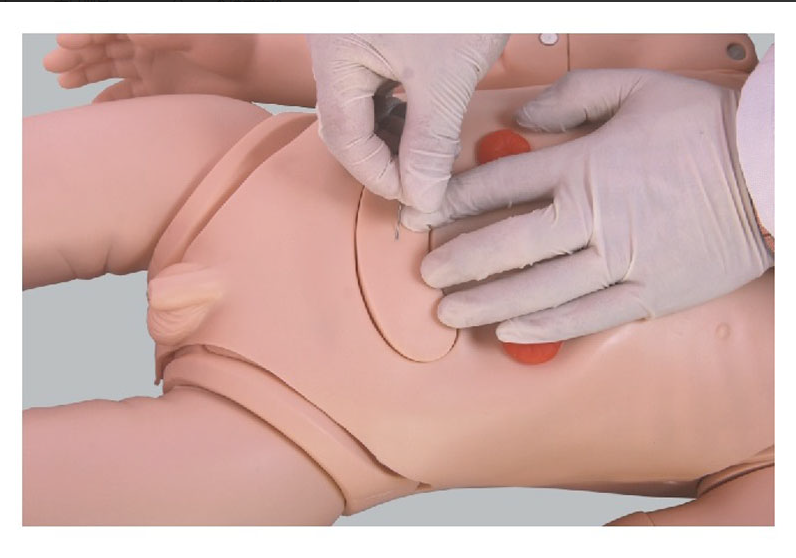In medical education, there is often an insurmountable gap between theoretical knowledge and practical operation. As an important tool of modern medical education, pediatric abdominal puncture training model is gradually becoming a bridge between theory and practice to help medical students bridge this gap.
With advanced materials and techniques, the training model of children's abdominal cavity highly simulates the anatomical structure and physiological characteristics of children's abdominal cavity. This high degree of imitation is not only reflected in the appearance and feel of the model, but also in its ability to simulate the real process and feedback mechanism of the piercing operation. When the puncture needle entered the simulated abdominal cavity correctly, participants were able to feel a distinct sense of frustration, which was very similar to the feeling when it was performed on a real patient. This simulated operating environment provides valuable hands-on opportunities for participants to master piercing techniques over and over again in a risk-free environment.

The accumulation of theoretical knowledge is the basis of practical operation, but it is far from enough to rely only on theoretical learning. The pediatric abdominal puncture training model allows students to practice repeatedly and consolidate and deepen their understanding of theoretical knowledge through continuous practice. During the exercise, students can intuitively observe the path and depth of the puncture needle into the abdominal cavity, understand the advantages and disadvantages of different puncture points, as well as possible complications and countermeasures. This learning method combining theory and practice helps students to master puncture skills faster and improve the level of clinical operation.
The application of children's abdominal puncture training model promoted the teaching interaction and feedback. In the training process, the teacher can observe the operation of the students in real time, point out the existing problems and shortcomings in time, and give targeted guidance and suggestions. At the same time, students can also exchange and share experiences with each other to improve their piercing skills. This kind of teaching interaction and feedback mechanism helps to form a positive learning atmosphere and stimulate students' learning interest and motivation.
In summary, the pediatric abdominal puncture training model successfully bridged the gap between theory and practice by means of highly simulation, repeated practice, and promoting teaching interaction and feedback, injecting new vitality into the development of medical education.
